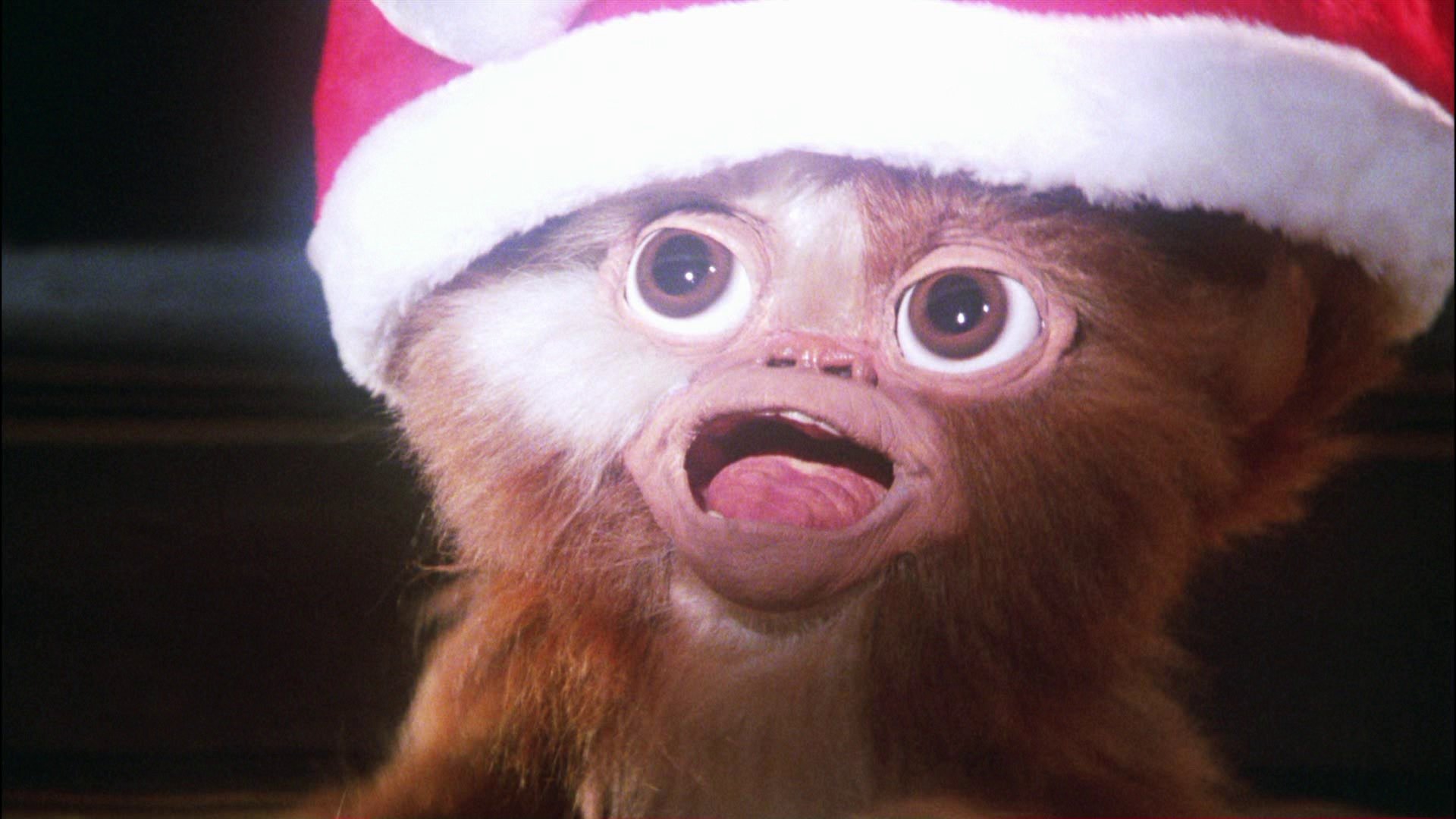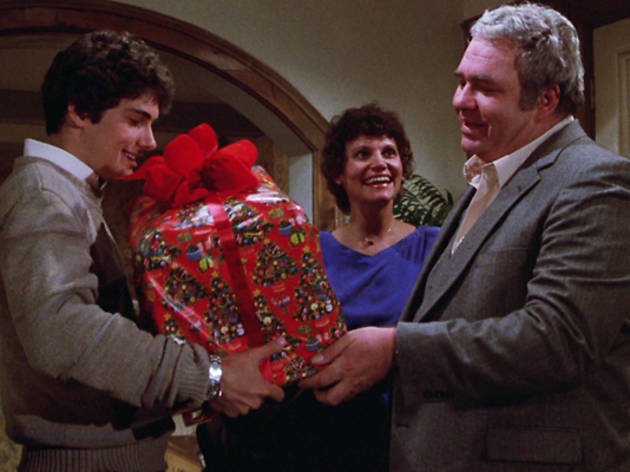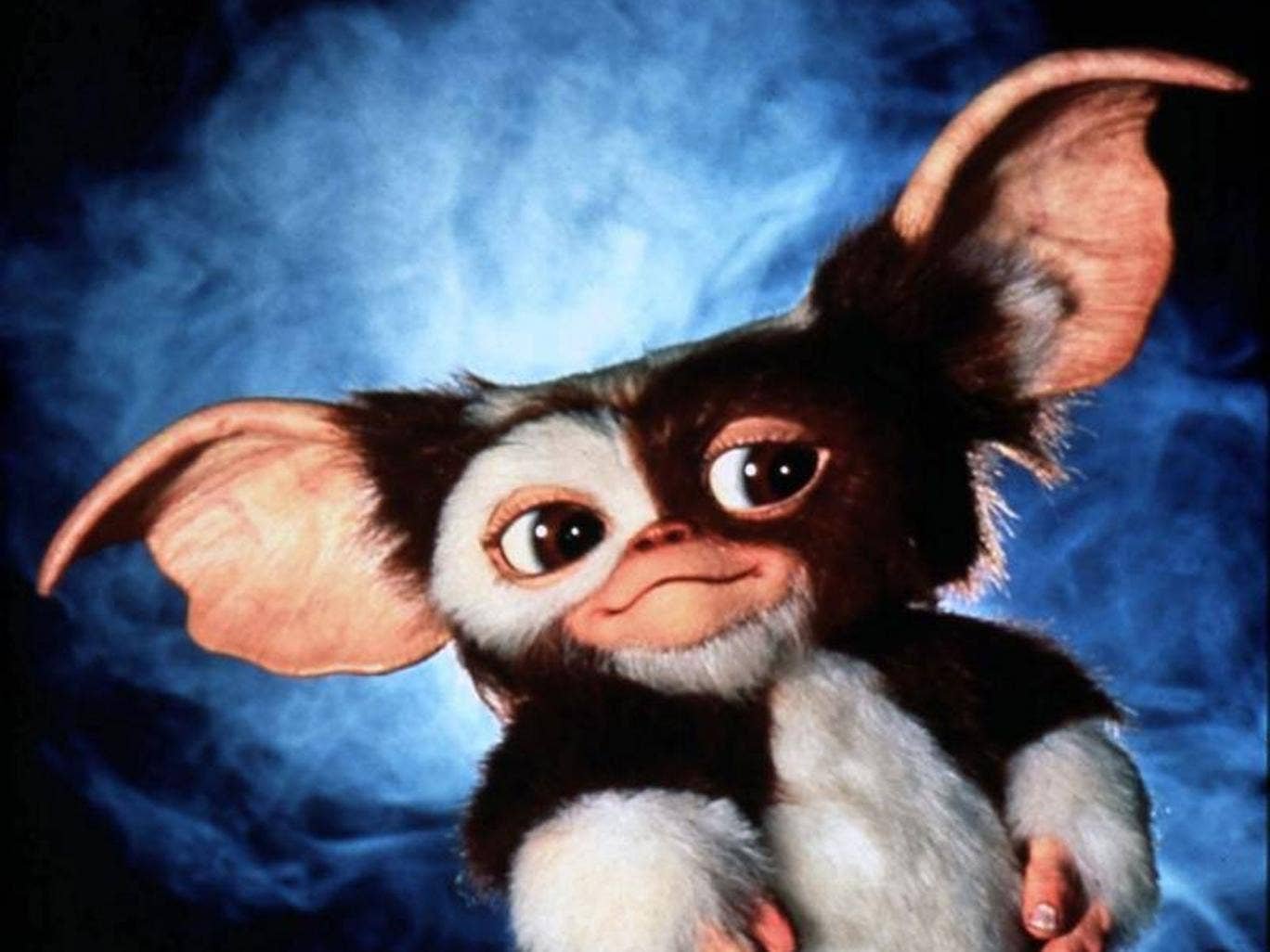[Editorial] 12 Ghouls of Christmas: Gremlins (1984): Horror for Children?

*contains spoilers for a film from 1984… but you really should have seen it by now*
I am not a huge fan of the festive period, I have a very comfortable black jumper that says, “I Don’t Hate Christmas, I Just Hate People”, and those who know me well are aware of how accurately that represents me (I much prefer Halloween - let’s be honest, it’s more fun). There are, however, a handful of Xmas films that I enjoy, all of which have a rather satirical or dark side. The film that tops this list, the one that I will watch repeatedly (and not just during the holiday period) is Gremlins (1984). This cult classic is the greatest Christmas movie of all time (sorry Die Hard fans), but is also the perfect gateway into horror for children. For its dark themes, Gremlins caused a lot of debate in the certification world, and is partially responsible for the creation of the PG-13 rating in the USA (look it up, Spielberg had a few issues with certification in the eighties).
For those who haven’t seen this iconic movie, the story centres around Billy (Zach Galligan), a twenty-something young man who receives a strange creature, a Mogwai called Gizmo, from his father for Christmas. With the pet comes three very specific rules – Don’t expose it to bright lights (sunlight will kill it), don’t get it wet, and never ever feed it after midnight. Obviously, in classic movie reasoning, all of these rules are ignored, resulting in Gizmo multiplying and the new Mogwais transforming into hideous Gremlins intent on chaos, destruction, and murder.

On its release in the UK in June 1984 (Summer, I know, it’s still a Christmas film), the BBFC gave Gremlins a 15 certificate, the 12 and 12A certificates were nowhere to be found in the eighties, and it seemed ‘too scary’ to be a PG. The full BBFC Report for this can be found here. Most of the reviewers made comments regarding the destruction of Christmas spirit and the terror children may feel seeing horror scenes unfold in familiar and safe spaces like home and school. One reviewer suggested that the death of the teacher, Mr Hanson (Glynn Turman), be removed because a teacher dying may be too distressing to watch? I’m not sure about other people, but I used to sing songs about teachers meeting their end when I was young, and the needle in Mr Hanson’s bum certainly makes that scene more comical than unsettling.Gremlins was also compared to such films as The Never-ending Story (another great horror film for kids), which apparently wasn’t as traumatising, even with Gmork, that horrific wolf animatronic…A final comment worth mentioning from the reports is regarding Kate (Phoebe Cates)’s story of her father’s death – dressed as Santa, climbing down the chimney as a surprise, slipping and breaking his neck. Funnily enough, the father’s demise didn’t seem to be the issue, it was the fact that the children would learn that Santa wasn’t real from this story. Much more upsetting than a parent dying and his body not being found for days.

I for one revelled in the horror scenes as a young child, the almost slapstick portrayal of most people’s expiration in this film really gave birth to my sense of humour as an adult (here’s looking at you Mrs Deagle, flying out the window and landing bottom up in the snow). The best of these scenes, in my opinion, has to be Billy’s mum teaching the Gremlins a lesson in her kitchen. Even on re-watch I find myself shouting out in glee as she pushes the first creature into her blender, whizzing it to pulp. This is followed by the stabbing of another and a beautiful popping sound as a third explodes in the microwave. Now, before the naysayers pipe up, I understand that this sounds too gory for children. However, the genius of this scene, of the entire film perhaps, is that Gremlins bleed green, not red. That distance between their biology and our own makes the entire construct so much more palatable, we aren’t watching bodies being obliterated that we can relate to on a visceral level.

Despite this, one scene that frightened me a little in my youth was the final jump scare. The heroes triumph, Gizmo opens the blinds on Stripe, the leader of the Gremlins, revealing bright sunlight before killing him just as he attempts to jump into a fountain to multiply once again. The prolonged face melting shot was gruesome enough, it was very reminiscent of a scene in Indiana Jones and the Raiders of the Lost Ark (which was a PG on its release by the way). But, as the protagonists gather their thoughts, Stripe’s skeleton leaps from the fountain for one last attack, only to bubble down to goo on the floor at Billy’s feet. Although the green gore is utilised again in this scene, I still shudder at the thought of that corpse leaping out for one last scare. At least Barney the dog doesn’t try and eat the stuff that remains.

As you can probably tell, I hold Gremlins close to my heart. Gizmo still remains the cutest little puppet to ever grace the big screen, and the Christmas setting puts a twist on the overly merry themes that tend to haunt this season.Although there are some quite outdated and at times problematic representations in this film (namely Grandfather (played by Keye Luke) who is a poorly written stereotype of Chinese culture, and Mr Futterman (Dick Miller)’s constant comments about ‘foreign’ cars and technology), the rest of Gremlins still holds up; the effects aren’t schlocky in modern standards, perhaps because a lot of what you see on screen are practical puppetry and gore.
In 2012, the BBFC decided to recertify Gremlins as a 12A, which is a far more suitable certificate; it gives parents the freedom to decide whether children younger than twelve years old will be able to cope with the horror and gore, without cutting off what I believe is the target audience of this movie. The only important question that remains at this writer’s fingertips is where on earth did the Gremlins find tiny Gremlin-sized guns? Even as an adult I don’t understand why they have firearms…
When people think of horror films, slashers are often the first thing that comes to mind. The sub-genres also spawned a wealth of horror icons: Freddy, Jason, Michael, Chucky - characters so recognisable we’re on first name terms with them. In many ways the slasher distills the genre down to some of its fundamental parts - fear, violence and murder.
Throughout September we were looking at slasher films, and therefore we decided to cover a slasher film that could be considered as an underrated gem in the horror genre. And the perfect film for this was Franck Khalfoun’s 2012 remake of MANIAC.
In the late seventies and early eighties, one man was considered the curator of all things gore in America. During the lovingly named splatter decade, Tom Savini worked on masterpieces of blood and viscera like Dawn of the Dead (1978), a film which gained the attention of hopeful director William Lustig, a man only known for making pornography before his step into horror.
Looking for some different slasher film recommendations? Then look no fruther as Ariel Powers-Schaub has 13 non-typical slasher horror films for you to watch.
Even though they are not to my personal liking, there is no denying that slasher films have been an important basis for the horror genre, and helped to build the foundations for other sub-genres throughout the years.
But some of the most terrifying horrors are those that take place entirely under the skin, where the mind is the location of the fear. Psychological horror has the power to unsettle by calling into question the basis of the self - one's own brain.
On Saturday, 17th June 2023, I sat down with two friends to watch The Human Centipede (First Sequence) (2009) and The Human Centipede 2 (Full Sequence) (2012). I was nervous to be grossed out (I can’t really handle the idea of eating shit) but excited to cross these two films off my list.
Many of the most effective horror films involve blurring the lines between waking life and a nightmare. When women in horror are emotionally and psychologically manipulated – whether by other people or more malicious supernatural forces – viewers are pulled into their inner worlds, often left with a chilling unease and the question of where reality ends and the horror begins.
Body horror is one of the fundamental pillars of the horror genre and crops up in some form or another in a huge variety of works. There's straightforward gore - the inherent horror of seeing the body mutilated, and also more nuanced fears.
In the sweaty summer of 1989, emerging like a monochrome migraine from the encroaching shadow of Japan’s economic crash, Shin’ya Tsukamoto’s Tetsuo: The Iron Man shocked and disgusted the (very few) audiences originally in attendance.
Whether it's the havoc wreaked on the human body during pregnancy, emotional turmoil producing tiny murderous humans or simply a body turning on its owner, body horror films tend to be shocking. But while they're full of grotesque imagery, they're also full of thoughtful premises and commentary, especially when it comes to women, trauma, and power.
The human body is a thing of wonder and amazement–the way it heals itself, regenerates certain parts and can withstand pain and suffering to extreme extents. But the human body can also be a thing of disgust and revulsion–with repugnant distortions, oozing fluids and rotting viscera.
This June we’ve been looking at originals and their remakes—and whilst we don’t always agree with horror film remakes, some of them often bring a fresh perspective to the source material. For this episode, we are looking at the remake of one of the most controversial exploitation films, The Last House on the Left (2009).
The year was 1968 and a young man named George A. Romero had shot his first film, a horror movie that would change the world of cinema and not just horror cinema, at that. Night of the Living Dead (1968), would go on to become one of the most important and famous horror films of all time as it tackled not only survival horror but also very taboo and shocking topics like cannibalism and matricide.
In the end I decided to indulge myself by picking eight of my favourite shorts, and choosing features to pair with them that would work well as a double bill. The pairs might be similar in tone, subject or style; some of the shorts are clearly influenced by their paired movie, while others predate the features.

RELATED ARTICLES
Films that blend horror with romance always fascinate me; add a niche contemporary setting that I’ve never heard of before and I’m hooked. Cannibal Mukbang was made by Aimee Kuge, a young woman from New York, and I was privileged to spend a little time talking with her over Zoom…
Now it’s time for Soho’s main 2023 event, which is presented over two weekends: a live film festival at the Whirled Cinema in Brixton, London, and an online festival a week later. Both have very rich and varied programmes (with no overlap this year), with something for every horror fan.
In the six years since its release the Nintendo Switch has amassed an extensive catalogue of games, with everything from puzzle platformer games to cute farming sims to, uh, whatever Waifu Uncovered is.
A Quiet Place (2018) opens 89 days after a race of extremely sound-sensitive creatures show up on Earth, perhaps from an exterritorial source. If you make any noise, even the slightest sound, you’re likely to be pounced upon by these extremely strong and staggeringly fast creatures and suffer a brutal death.
Have I told you about Mayhem Film Festival before? It’s a favourite event of mine, so I’ve blurted about it in anticipation to many people I know. The event has just passed, so now is the time to gush its praises to those I don’t know.
Loop Track, Thomas Sainsbury’s directorial debut, has such a sparse description that it’s really difficult to know what you’re stepping into when it starts. It’s about Ian (played by the director), who is taking a trek through the New Zealand bush….
For a movie that doesn’t even mention the word “vampire” once throughout the length of the film, Near Dark (1987) is a unique entry in the vampire film genre.
If you like cults, sacrificial parties, and lesbian undertones then Mona Awad’s Bunny is the book for you. Samantha, a student at a prestigious art university, feels isolated from her cliquey classmates, ‘the bunnies’.
Kicking off on Tuesday 17th October, the 2023 edition considers the cinematic, social and cultural significance of the possessed, supernatural and unclean body onscreen.
I was aware of the COVID-19 pandemic before I knew that’s what it would be called, and before it ever affected me personally. My husband is always on top of world events, and in late 2019, he explained what was happening around the globe.
Metal and horror have many aspects in common. The passionate fanbase for both genres attend festivals and has created strong communities. Horror and Metal fans often sport clothing depicting their favourite bands or films, almost like a uniform.

EXPLORE
Now it’s time for Soho’s main 2023 event, which is presented over two weekends: a live film festival at the Whirled Cinema in Brixton, London, and an online festival a week later. Both have very rich and varied programmes (with no overlap this year), with something for every horror fan.
In the six years since its release the Nintendo Switch has amassed an extensive catalogue of games, with everything from puzzle platformer games to cute farming sims to, uh, whatever Waifu Uncovered is.
A Quiet Place (2018) opens 89 days after a race of extremely sound-sensitive creatures show up on Earth, perhaps from an exterritorial source. If you make any noise, even the slightest sound, you’re likely to be pounced upon by these extremely strong and staggeringly fast creatures and suffer a brutal death.
If you like cults, sacrificial parties, and lesbian undertones then Mona Awad’s Bunny is the book for you. Samantha, a student at a prestigious art university, feels isolated from her cliquey classmates, ‘the bunnies’.
The slasher sub genre has always been huge in the world of horror, but after the ‘70s and ‘80s introduced classic characters like Freddy Krueger, Michael Myers, Leatherface, and Jason, it’s not harsh to say that the ‘90s was slightly lacking in the icon department.
Mother is God in the eyes of a child, and it seems God has abandoned the town of Silent Hill. Silent Hill is not a place you want to visit.
Being able to see into the future or back into the past is a superpower that a lot of us would like to have. And while it may seem cool, in horror movies it usually involves characters being sucked into terrifying situations as they try to save themselves or other people with the information they’ve gleaned in their visions.
Both the original Pet Sematary (1989) and its 2019 remake are stories about the way death and grief can affect people in different ways. And while the films centre on Louis Creed and his increasingly terrible decision-making process, there’s no doubt that the story wouldn’t pack the same punch or make the same sense without his wife, Rachel.


![[Editorial] 5 Slasher Short Horror Films](https://images.squarespace-cdn.com/content/v1/5fe76a518d20536a3fbd7246/1696358009946-N8MEV989O1PAHUYYMAWK/Screenshot+2023-10-03+at+19.33.19.png)
![[Ghouls Podcast] Maniac (2012) with Zoë Rose Smith and Iona Smith](https://images.squarespace-cdn.com/content/v1/5fe76a518d20536a3fbd7246/1696356006789-NYTG9N3IXCW9ZTIJPLX2/maniac.jpg)
![[Editorial] If Looks Could Kill: Tom Savini’s Practical Effects in Maniac (1980)](https://images.squarespace-cdn.com/content/v1/5fe76a518d20536a3fbd7246/1694952175495-WTKWRE3TYDARDJCJBO9V/Screenshot+2023-09-17+at+12.57.55.png)
![[Editorial] Deeper Cuts: 13 Non-Typical Slashers](https://images.squarespace-cdn.com/content/v1/5fe76a518d20536a3fbd7246/1694951568990-C37K3Z3TZ5SZFIF7GCGY/Curtains-1983-Lesleh-Donaldson.jpg)
![[Editorial] Editor’s Note: Making a slash back into September](https://images.squarespace-cdn.com/content/v1/5fe76a518d20536a3fbd7246/1694354202849-UZE538XIF4KW0KHCNTWS/MV5BMTk0NTk2Mzg1Ml5BMl5BanBnXkFtZTcwMDU2NTA4Nw%40%40._V1_.jpg)
![[Editorial] 8 Mind Horror Short films](https://images.squarespace-cdn.com/content/v1/5fe76a518d20536a3fbd7246/1693504844681-VPU4QKVYC159AA81EPOW/Screenshot+2023-08-31+at+19.00.36.png)
![[Editorial] Eat Shit and Die: Watching The Human Centipede (2009) in Post-Roe America ](https://images.squarespace-cdn.com/content/v1/5fe76a518d20536a3fbd7246/1691245606758-4W9NZWE9VZPRV697KH5U/human_centipede_first_sequence.original.jpg)
![[Editorial] Top 15 Female-Focused Mind Horror Films](https://images.squarespace-cdn.com/content/v1/5fe76a518d20536a3fbd7246/1691247166903-S47IBEG7M69QXXGDCJBO/Image+5.jpg)
![[Editorial] 8 Body Horror Short films](https://images.squarespace-cdn.com/content/v1/5fe76a518d20536a3fbd7246/1690838270920-HWA5RSA57QYXJ5Y8RT2X/Screenshot+2023-07-31+at+22.16.28.png)
![[Editorial] Metal Heart: Body Dysmorphia As A Battle Ground In Tetsuo: The Iron Man (1989)](https://images.squarespace-cdn.com/content/v1/5fe76a518d20536a3fbd7246/1690190127461-X6NOJRAALKNRZY689B1K/Screenshot+2023-07-24+at+10.08.27.png)
![[Editorial] Top 15 Female-Focused Body Horror Films](https://images.squarespace-cdn.com/content/v1/5fe76a518d20536a3fbd7246/1689081174887-XXNGKBISKLR0QR2HDPA7/download.jpeg)
![[Editorial] Editor’s Note: Getting sticky, slimy & sexy with body horror](https://images.squarespace-cdn.com/content/v1/5fe76a518d20536a3fbd7246/1689072388373-T4UTVPVEEOM8A2PQBXHY/Society-web.jpeg)
![[Ghouls Podcast] The Last House on the Left (2009) with Zoë Rose Smith and Jerry Sampson](https://images.squarespace-cdn.com/content/v1/5fe76a518d20536a3fbd7246/1687863043713-54DU6B9RC44T2JTAHCBZ/last+house+on+the+left.jpg)
![[Editorial] They’re Coming to Re-Invent You, Barbara! Night of the Living Dead 1968 vs Night of the Living Dead 1990](https://images.squarespace-cdn.com/content/v1/5fe76a518d20536a3fbd7246/1687199945212-BYWYXNBSH00C4V3UIOFQ/Screenshot+2023-06-19+at+19.05.59.png)
![[Editorial] 8 Short & Feature Horror Film Double Bills](https://images.squarespace-cdn.com/content/v1/5fe76a518d20536a3fbd7246/1687770541477-2A8J2Q1DI95G8DYC1XLE/maxresdefault.jpeg)
![[Editorial] Soho Horror Film Festival: Interview with Aimee Kuge on Cannibal Mukbang](https://images.squarespace-cdn.com/content/v1/5fe76a518d20536a3fbd7246/1701808004722-9M8SZ2UXY52QBQBR4NTI/img20230818_15150780.JPG)
![[Editorial] 10 Films & Events to Catch at Soho Horror Film Fest 2023](https://images.squarespace-cdn.com/content/v1/5fe76a518d20536a3fbd7246/1700819417135-299R7L4P0B676AD3RO1X/Screenshot+2023-11-24+at+09.41.52.png)
![[Editorial] 9 Horror Nintendo Switch Games To Play](https://images.squarespace-cdn.com/content/v1/5fe76a518d20536a3fbd7246/1697214470057-3XZXX8N4LYIMDFWS6Z3P/Screenshot+2023-10-13+at+17.20.13.png)
![[Mother of Fears] Mothering in Silence in A Quiet Place (2018)](https://images.squarespace-cdn.com/content/v1/5fe76a518d20536a3fbd7246/1696445921315-HZJ2DZYQIH6VVWXBO2YL/Screenshot+2023-10-04+at+19.52.29.png)
![[Event Review] Highlights from Mayhem Film Festival 2023](https://images.squarespace-cdn.com/content/v1/5fe76a518d20536a3fbd7246/1697624582491-MPT2VB9RRGU6OG7L6UKL/Mayhem+2023.jpg)
![[Editorial] Mayhem Festival: Interview with Thomas Sainsbury on Loop Track (2023)](https://images.squarespace-cdn.com/content/v1/5fe76a518d20536a3fbd7246/1697186472899-WC4RR0TW7L7LMFEBGPA2/Tom+Sainsbury.jpg)
![[Editorial] Keeping Odd Hours: A Retrospective on Near Dark (1987)](https://images.squarespace-cdn.com/content/v1/5fe76a518d20536a3fbd7246/1696445070868-HU9YIL3QPBCL1GW47R3Z/Screenshot+2023-10-04+at+19.36.53.png)
![[Editorial] 5 Female Focused Horror Book Recommendations](https://images.squarespace-cdn.com/content/v1/5fe76a518d20536a3fbd7246/1696441981361-52EQCTJ7AT2QF1927GM7/919xtm6d3fL._AC_UF894%2C1000_QL80_.jpg)
![[Editorial] What to Watch at This Year's Cine-Excess International Film Festival 2023](https://images.squarespace-cdn.com/content/v1/5fe76a518d20536a3fbd7246/1697213510960-REV43FEOZITBD2W8ZPEE/Screenshot+2023-10-13+at+17.01.15.png)
![[Editorial] Cherish Your Life: Comfort in the SAW Franchise Throughout and Beyond the COVID-19 Pandemic](https://images.squarespace-cdn.com/content/v1/5fe76a518d20536a3fbd7246/1695487675334-MYPCPYYZQZDCT548N8DI/Sc6XRxgSqnMEq54CwqjBD5.jpg)
![[Editorial] The Art of Horror in Metal](https://images.squarespace-cdn.com/content/v1/5fe76a518d20536a3fbd7246/1695486401299-E5H2JNNJT26HKN0CI7WC/Screenshot+2023-09-23+at+17.20.28.png)





















![[Editorial] 9 Best Slashers Released Within 10 Years of Scream (1996)](https://images.squarespace-cdn.com/content/v1/5fe76a518d20536a3fbd7246/1695478839037-LOFHGVM3H6BMSZW7G83M/Screenshot+2023-09-23+at+15.15.11.png)
![[Mother of Fears] Mother Vs. Monster in Silent Hill (2006)](https://images.squarespace-cdn.com/content/v1/5fe76a518d20536a3fbd7246/1695485781119-H6GNP0G3J2TLPAOIABV7/Screenshot+2023-09-23+at+17.11.56.png)
![[Editorial] 9 Terrifying Cerebral Visions in Horror Movies](https://images.squarespace-cdn.com/content/v1/5fe76a518d20536a3fbd7246/1693509801235-X23OL50T1DVGECH0ZJK2/MV5BMjQ0MTg2MjQ4MV5BMl5BanBnXkFtZTgwMTU3NDgxMTI%40._V1_.jpg)
![[Mother of Fears] I Don’t Wanna Be Buried in a Pet Sematary (1989) and (2019)](https://images.squarespace-cdn.com/content/v1/5fe76a518d20536a3fbd7246/1691328766069-QFNAVJOMFZVZ5CLU1RWM/Screenshot+2023-08-06+at+14.23.13.png)

I can sometimes go months without having a panic attack. Unfortunately, this means that when they do happen, they often feel like they come out of nowhere. They can come on so fast and hard it’s like being hit by a bus, my breath escapes my body, and I can’t get it back.